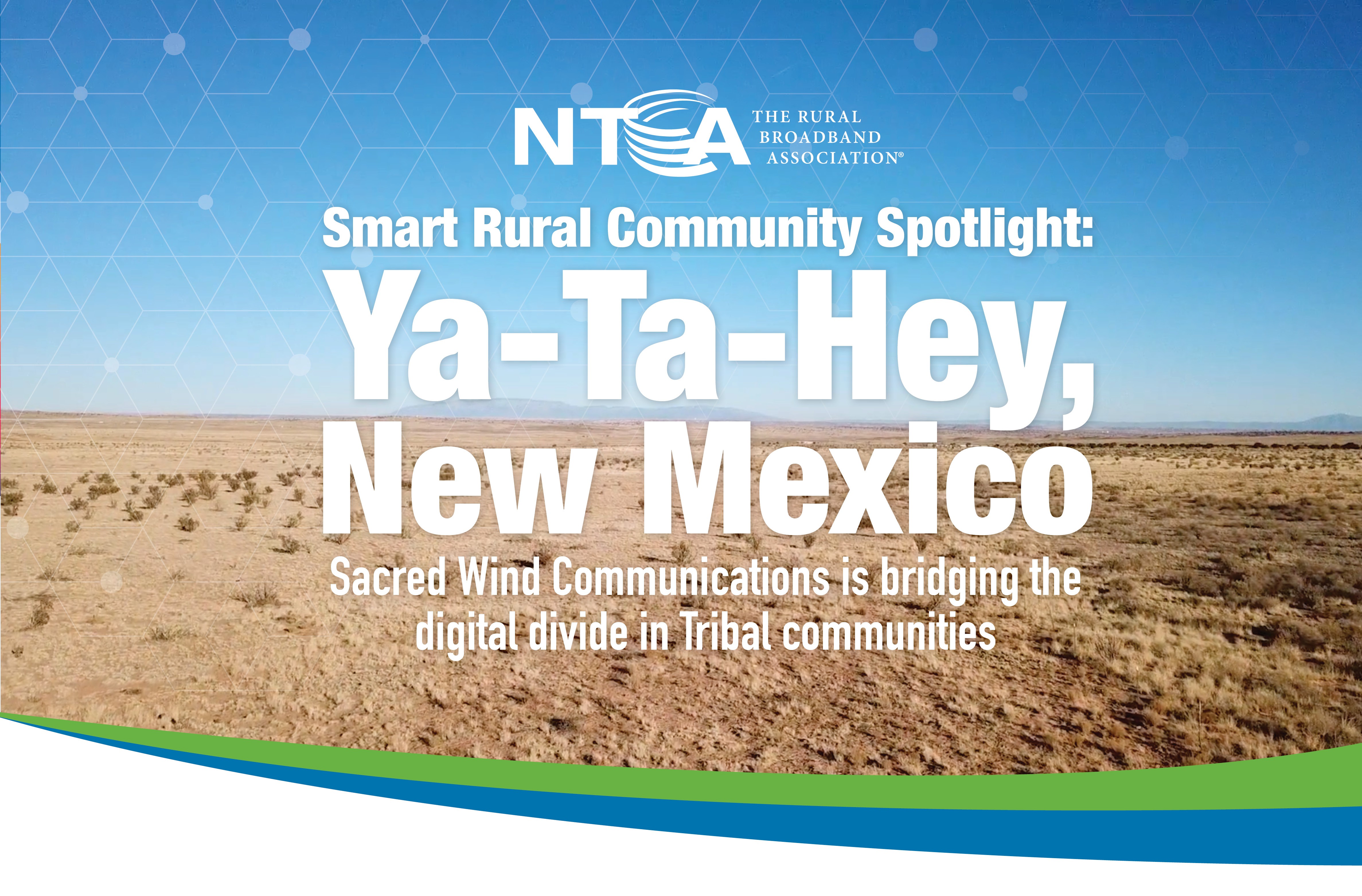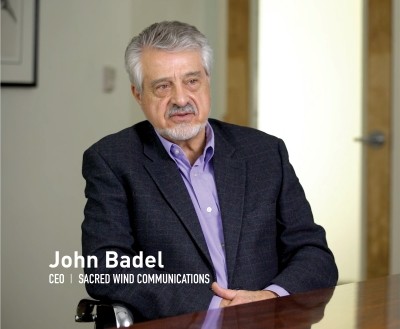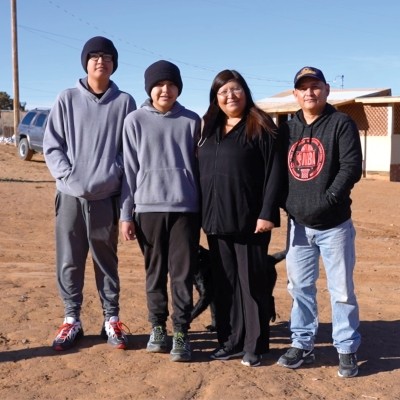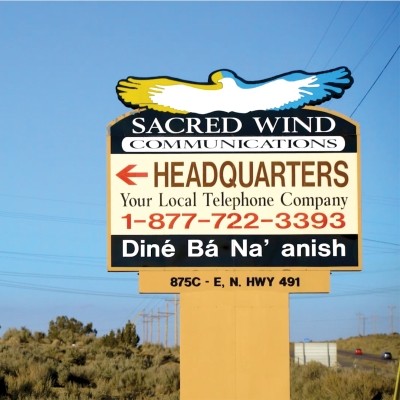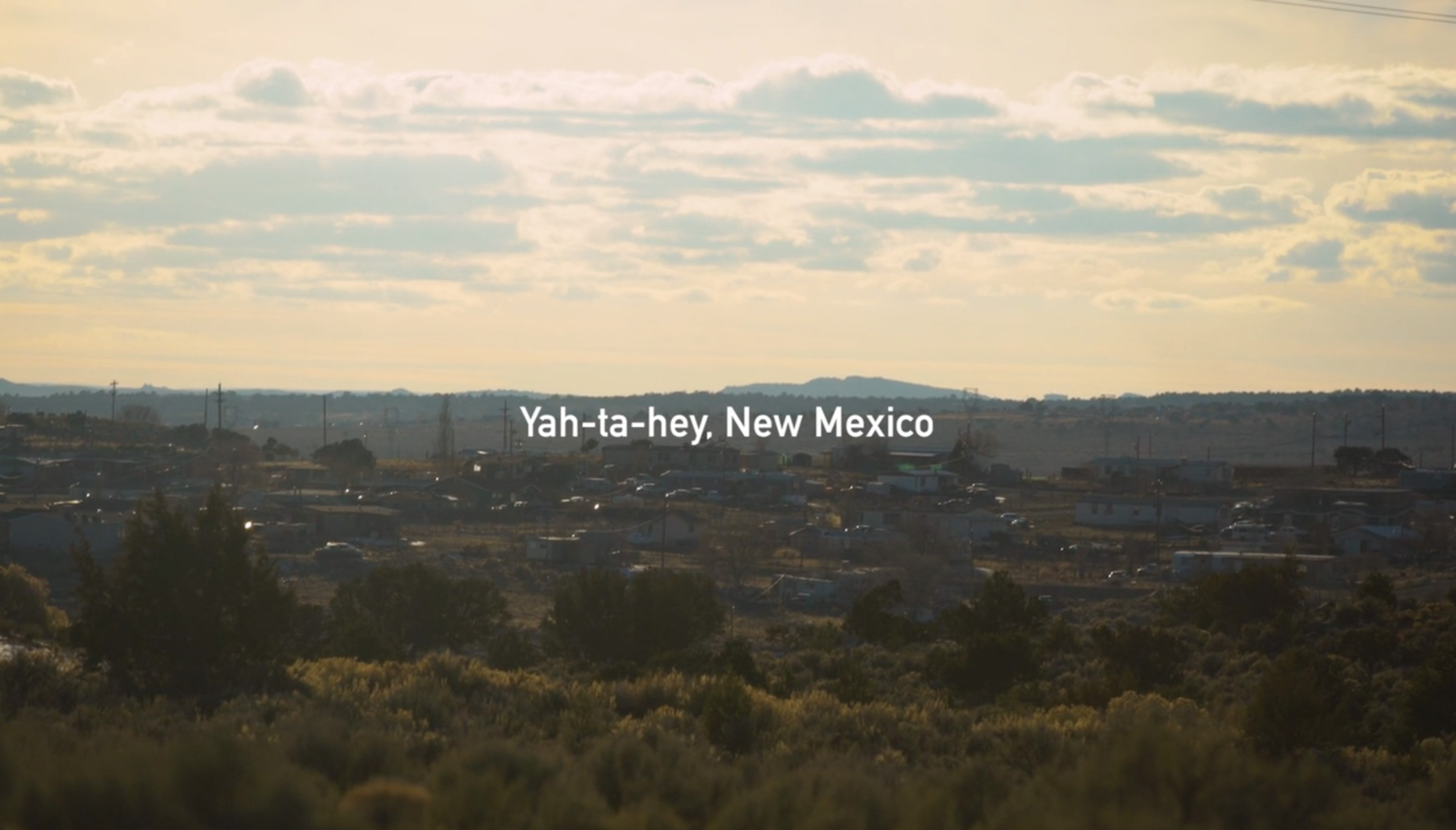To a stranger passing through on I-40, the landscape of rural New Mexico appears nothing short of idyllic: a great expanse of cloudless sky, with distant mesas and mountains cutting a jagged line across the horizon.
But to those who know where to look, the beautiful scenery is marred by the inequalities experienced by the people who live on that land.
“As I travel around New Mexico, I've always been struck by the lack of opportunities in some rural parts of the state, especially in the tribal areas,” said John Badal, Founder and CEO of Sacred Wind Communications based in Ya-Ta-Hey, New Mexico.
After almost 40 years in the telecommunication industry, John Badal left his position at a large national corporation to begin Sacred Wind with the goal of providing high-quality, affordable telecommunication services for rural residents on and off of Navajo land. Today, 98 percent of Sacred Wind’s customers belong to the Navajo Nation, a group of people who continue to face some of the highest rates of poverty in the entire country.
Equipped with high-speed broadband, many of Sacred Wind’s customers are building better lives, and better futures, for their families.
“Broadband is an opportunity equalizer,” John said. “It provides people an open gateway to the world where they can express themselves, they can carry a voice, from their community outward. It also allows them to have the same access to education, health care and economic opportunities as everyone else in the United States.”
An Insurmountable Challenge
Sacred Wind began as a way to bring high-speed internet into a community that has historically been considered “too rural” to support.
“National companies don't have the business plan and the motivation to provide service to sparsely populated, low-income areas,” John said. “I chose to introduce broadband and basic telecommunication services to the Navajo because I saw that no one else was doing it, and it had to be done.”
The Navajo Nation encompasses more than 27,000 square miles, an area larger than the state of West Virginia. Sacred Wind’s service territory alone, which services portions of 22 Navajo chapters and represents just 15 percent of Navajo land, is twice the size of the state of Delaware.
Like many rural communities across the United States, the Navajo Nation has limited telecommunications resources. In fact, more than half of all Navajo chapters lack any access to broadband. John identifies three barriers—geographic obstacles, federal regulations, and the region’s extremely low population density of roughly two homes per square mile—which have prevented these residents from gaining access to Internet in the past.
“Too many people in the industry and policymakers in this state saw the issue as almost insurmountable,” John said. “The sparser populations in many rural areas of New Mexico defy proper investment in very expensive infrastructures.”
Sacred Wind’s service territory covers deserts, five mountain ranges and several canyons. In some areas of Navajo land, lava fields have rendered burying cable all but impossible.
“All of those components make for a very unfortunate situation for much of the rural areas of New Mexico,” John said.
Broadband: Bringing Families Together
John and his team at Sacred Wind, many of whom are Navajo themselves, have not let these barriers deter their mission of bridging the digital divide in rural New Mexico.
One key step in this process has been replacing copper cable with faster, more reliable fiber Internet. In 2020, Sacred Wind completed a project in partnership with the Navajo Housing Authority to bring fiber-optic cable to more than 40 homes just south of Farmington. And earlier this year, they completed the first-ever redundant fiber line connecting Albuquerque and Gallup.
While most customers can access speeds up to 25 megabits per second with copper Internet, fiber enables speeds of up to 100 megabits per second. For the people living in these communities, fiber has been a means of keeping their families safe, educated, and connected—especially during the COVID-19 pandemic.
In December 2020, Matthew and Betty Lou Secataro became the first family on Navajo land to receive fiber-optic Internet. It could not have come at a better time for the Secataros; their two sons, Mason and Matthew Jr., were attending school online through a program in Santa Fe. As the end of their first semester approached, they began experiencing issues with their Internet connection.
“We had to take them into town, to Albuquerque, to eat at a McDonald's to do their lessons,” Betty Lou said.
With their new fiber line and the faster speeds it allows, Mason and Matthew Jr. can complete all of their lessons from home. Matthew and Betty do not have to worry about their sons missing out on their education—or worse, coming into contact with the virus—as a result of unreliable Internet.
“It’s a way for us to catch up with the whole world,” Matthew said.
Even when burying fiber-optic cable has not been an option, Sacred Wind has stopped at nothing to provide individuals with the connections they need. Many households in the Navajo Nation are not able to afford basic utilities like electricity; in these cases, Sacred Wind will provide solar panels to power broadband to homes.
One such solar panel has allowed customers Suzanne and Steven Charley to bring their family together. Without access to the Internet at home, Suzanne and Steven’s children have been living with their grandmother. They could go weeks without seeing each other, but now, with broadband powered by solar energy, the kids can do their school work at home and the family can spend their evenings playing games and watching movies together.
“Ever since we got this Internet, my kids have been wanting to come here more often,” Suzanne said. “We're just happy that we got the Sacred Wind.”
A Model for America
The Secateros’ and the Charleys’ stories are just two examples of what we can achieve when we provide broadband service to the most historically underserved communities in our country. In recognition of Sacred Wind’s efforts to connect Tribal families and businesses with the rest of the world, NTCA has named Ya-Ta-Hey a Smart Rural Community.
And their impact extends far beyond the communities they serve. Sacred Wind’s innovation and determination in the face of adversity should be a lesson to all: that no corner of this country is too rural, no landscape too rugged, to reach.
“We have built a model to convince other people that they can do this job in the hardest to reach areas of the United States,” John said. “If Sacred Wind can do this for the Navajo people, what can other people do in other Tribal areas, in other remote, rural areas?”
Learn more about what it means to be a Smart Rural Community at www.smartruralcommunity.org.

